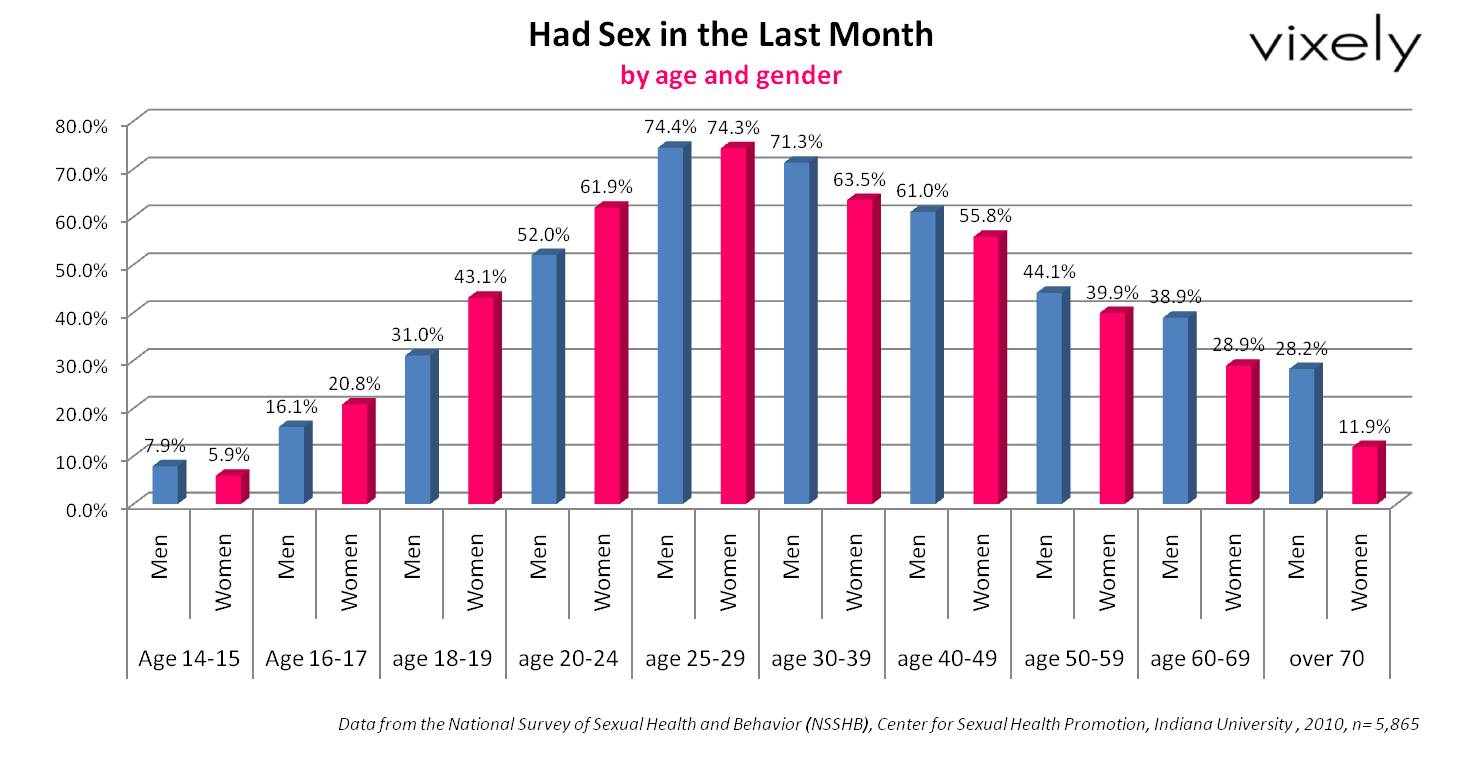Sexual Addiction, Statistics & Infograhics
Correcting Cognitive Distortions in Low Sexual Desire
Researchers published findings from the largest nationally representative study of sexual and sexual-health behaviors ever conducted. Called the National Survey of Sexual Health and Behavior (NSSHB), it is one of the most comprehensive studies on sexuality in almost two decades.
The researchers said they were struck by the variety of ways in which the subjects engaged in sex – 41 different combinations of sexual acts were tallied, encompassing vaginal and anal intercourse, oral sex, and partnered masturbation.
“People are often curious about others’ sex lives,” said Debby Herbenick, associate director of the CSHP. “They want to know how often men and women in different age groups have sex, the types of sex they engage in, and whether they are enjoying it or experiencing sexual difficulties. Our data provide answers to these common sex questions and demonstrate how sex has changed in the nearly 20 years since the last study of its kind.”

Did you know…
- Married couples have sexual intercourse an average of 60 times per year — about once a week. For couples in their twenties, two or three times per week is average. For couples in their fifties, once or twice a week is average.
- An average sexual encounter lasts 15 to 45 minutes.
- The average duration of intercourse is three to seven minutes.
- Happily married couples with well-functioning sex lives have disappointing sex 5% to 15% of the time. Only 35% to 45% of experiences are “very good” for both partners.
- Sexuality adds only 15% to 20% to marital satisfaction. Healthy sexuality is not the most important factor in successful marriage.
- The initial romantic/passionate phase of a relationship lasts only six months to a year. After that couples must find a new style that incorporates intimacy and eroticism.
- Birth of the first child reduces sexual satisfaction for 70% of all couples.
- Even when men use Viagra or Cialis, they achieve effective intercourse only 80% of the time.

Additional key findings include:
- There is enormous variability in the sexual repertoires of U.S. adults, with more than 40 combinations of sexual activity described at adults’ most recent sexual event.
- Many older adults continue to have active pleasurable sex lives, reporting a range of different behaviors and partner types, however adults over the age of 40 have the lowest rates of condom use. Although these individuals may not be as concerned about pregnancy, this suggests the need to enhance education efforts for older individuals regarding STI risks and prevention.
- About 85% of men report that their partner had an orgasm at the most recent sexual event; this compares to the 64% of women who report having had an orgasm at their most recent sexual event. (A difference that is too large to be accounted for by some of the men having had male partners at their most recent event.)
- Men are more likely to orgasm when sex includes vaginal intercourse; women are more likely to orgasm when they engage in a variety of sex acts and when oral sex or vaginal intercourse is included.
- While about 7% of adult women and 8% of men identify as gay, lesbian or bisexual, the proportion of individuals in the U.S. who have had same-gender sexual interactions at some point in their lives is higher.
- At any given point in time, most U.S. adolescents are not engaging in partnered sexual behavior. While 40% of 17 year-old males reported vaginal intercourse in the past year, only 27% reported the same in the past 90 days.
- Adults using a condom for intercourse were just as likely to rate the sexual extent positively in terms of arousal, pleasure and orgasm than when having intercourse without one.
Source:
- National Survey of Sexual Health & Behavior (2010)
- http://www.huffingtonpost.com/2010/10/04/sex-study-by-national-sur_n_748751.html

